What is a Watershed?
Watershed Conservation
A watershed is all of the lands that from which surface water empties into the same main waterbody (for our watersheds, that means a large river) and everything in and on top of that land. Barry County has two main watersheds, the Kalamazoo and the Thornapple (which includes the Tyler Creek subwatershed).
The Thornapple Watershed includes the Thornapple River which is about eighty-eight miles long and runs through Barry County, with its headwaters in Eaton County before flowing into the Grand River in Kent County. The Thornapple River Watershed has a major tributary in the Coldwater River. The watershed encompasses approximately 422,545 acres of land in Barry, Eaton, Kent, Ionia and Allegan counties. The land use in the TRW is predominately rural, with about 52.1% in some form of agriculture.
The activities that happen on land directly affect the watershed through land and stormwater runoff. As water flows over the land and into storm drains or directly into waterways, it picks up contaminants.
Watershed Group
The Barry Conservation District partners with the Thornapple River Watershed Council to implement the Thornapple River Watershed Management Plan.
Thornapple River
Watershed Management Plan
The Thornapple River Watershed Management Plan (TRWMP) is a compilation and synthesis of water quality data for the Thornapple River Watershed. The TRWMP also outlines the main nonpoint source pollution issues and recommended solutions for the Thornapple River Watershed. The data was collected throughout the 00’s and the TRWMP was completed and approved in 2016. This plan serves as a guide for actions to protect water quality locally.
Summary of the Thornapple River Watershed Management Plan
The Thornapple River Watershed Management Program brought together agencies and organizations from throughout the watershed to assess, study and develop recommendations to sustain the health of the Thornapple River, its tributaries and the lands surrounding them.
This initiative came into effect to analyze the health of the watershed and to come together with problem-solving techniques to improve the well being of the watershed not just in terms of pollution of the water but as well as preserving the wildlife and habitats in the watershed.
The main outcome of the program was the development of the Thornapple River Watershed Plan, which assesses the water quality of the entire Thornapple River by analyzing the pollution causes as well as sources. The various pollution levels impair drinking water, fisheries, recreation uses (swimming, kayaking, boating, and canoeing) as well as wildlife and critical areas that have been identified for the need for improvement.
Protecting your Watershed
Stormwater Pollution
When it rains, stormwater runs over the land and picks up pollutants before entering a stormdrain or waterbody. Stormdrains lead directly into rivers, lakes, and streams without filtration. Pollutants picked up by stormwater may include E. coli from pet waste, automotive fluids, lawn chemicals like fertilizer and pesticides, and litter. Another form of stormwater pollution is agricultural runoff, sedimentation, and siltation. When soil from runoff enters waterways, the suspended sediment can settle on the river or lakebed. Accumulation of silt negatively affects marine life, freshwater fish, and even mussels who are especially susceptible to silt, since they are filter feeders.
Reduce stormwater pollution runoff by;
Picking up pet waste and disposing of it properly
Keeping storm drains clear of debris and trash
Only putting rain in the drain (don’t pour anything in stormdrains)
Using only phosphorus free fertilizer (or none)
Planting Native Plants in your landscape or in a rain garden
Install and maintain Natural Shorelines
Septic Systems and Water Quality
Failing, improperly installed, and aging septic systems can negatively impact ground water by contaminating water with pathogens such as E. coli, nutrients like nitrogen and phosphorus, and chemicals. These contaminates can cause illness in people and pets and can even leach into nearby drinking water wells. “Pathogens can cause illnesses for recreational swimming areas, even requiring beach closures and hazards to humans and pets. Excess nitrogen and/or phosphorus can cause an overgrowth of blue-green algae or cyanobacteria in a short period of time, triggering algae blooms. The overgrowth of algae consumes oxygen and blocks sunlight from underwater plants. When the algae eventually die, the oxygen in the water is consumed. This can cause fish and other aquatic organisms to die and create regional “dead zones.”
Can failing septic systems affect human health?
A failing septic system likely discharges untreated wastewater, which contains pathogens (e.g., E. coli), nutrients and other harmful substances directly into the groundwater or onto the ground and into surface waters.
Surfacing untreated wastewater from a failed drainfield is a direct public health hazard to anyone exposed to it. Children and pets can unknowingly be exposed to this hazard which can cause illness. If you or others have been exposed to untreated wastewater, contact your health professional.
Straight pipes can discharge untreated wastewater directly into ditches, streams and other water bodies causing a direct public health hazard and also a regional public health hazard to anyone who comes into contact with the untreated wastewater.
Drinking water from groundwater wells and from surface water sources can be contaminated by untreated wastewater and require filtration and disinfection to remain potable. Check with your local health department about having your water tested.
Excess nitrogen contamination in surface or groundwater supplies can impact drinking water systems requiring special treatment.
Chemicals that may be discharged into septic systems can negatively impact water quality and public health in both groundwater and surface water sources, even in very small amounts.
EPA’s Quick Tip Video explains how regular water quality testing can protect and safeguard your family’s health, “Keep It Clean!”
Source: EPA
Resources for Homeowners
“The Michigan Department of Environment, Great Lakes, and Energy (EGLE) chose Michigan Saves to create and implement an affordable loan program to help homeowners replace failing septic systems. The program is expected to launch in 2024. Homeowners will be able to access two loan tiers through a network of Michigan Saves authorized septic installation contractors.”









